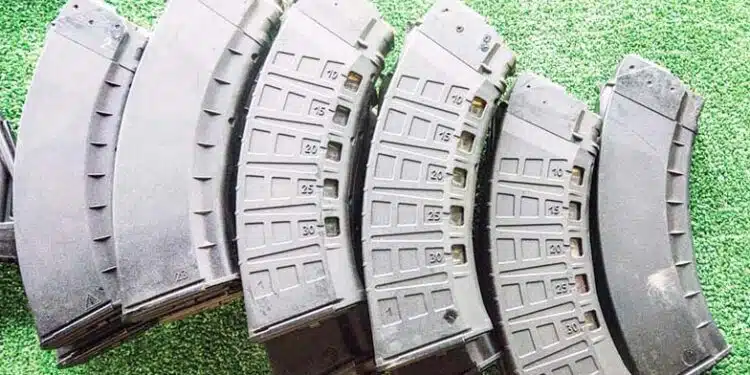By Vladimir Onokoy
In recent years, the popularity of AK magazine collecting increased dramatically. Every week you can see rare Soviet prototype magazines selling for anything from $300 to $4,000 a piece.
Surprisingly, very little information is available about history, development and identification of those magazines. There are no reputable sources, let alone collectors’ guides, that can serve as a foundation for research and be used for the correct appraisal of the magazines.
Naturally, there is a lot of confusion and misinformation, which allows some sellers to take advantage of the collectors who do not really understand what exactly they are buying.
While this author does not claim to be an expert in the history of Kalashnikov magazines, he was lucky to see with his own eyes the development and testing process of nearly all modern Russian magazines: AK-12 mags, 5.45 round drum, 7.62×39 quad-stacks as well as the weapons that use those magazines.
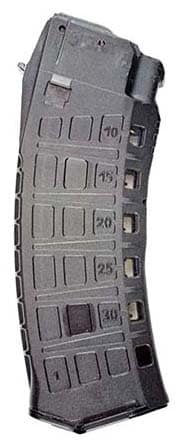
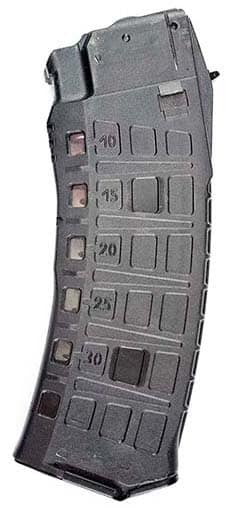
This article is dedicated to the history of the AK-12 magazine, since now it seems to be the most common modern collectable AK mag sold at social media groups and auctions.
The year was 2012. The world famous Izh-mash factory, which produced AKs since 1949, is the largest Russian manufacturer of small arms and was going through a tough bankruptcy. Just a year before that, the Russian Ministry of Defense declared that they are not going to buy any more AKs, since they “already had enough of them.”
While the Russian Ministry of Defense did not really buy a significant number of small arms from Izhmash since the early 1990s, the psychological consequences of this statement were devastating. It was clear that the Ministry of Defense was, for once, disappointed in Izhmash and not willing to bail it out with new orders.
The new generation weapon and gear program called “Ratnik” that was made public in 2011 also did not look very promising. It included a submission from Izhmash, but an early AK-12 had a lot of teething problems, and balanced recoil A-545 and A-762 assault rifles had an early lead in a competition for the next service rifle of the Russian Armed Forces.
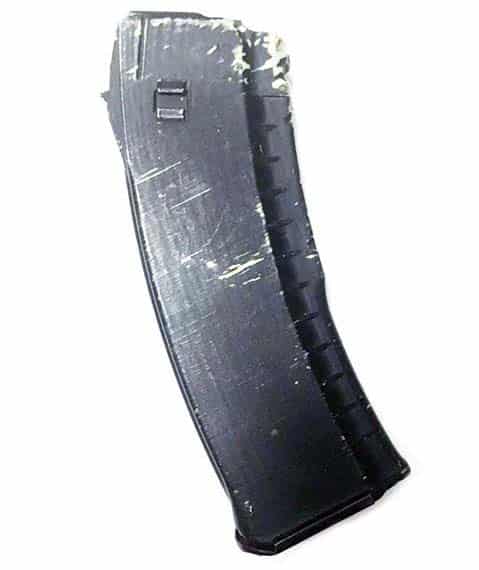
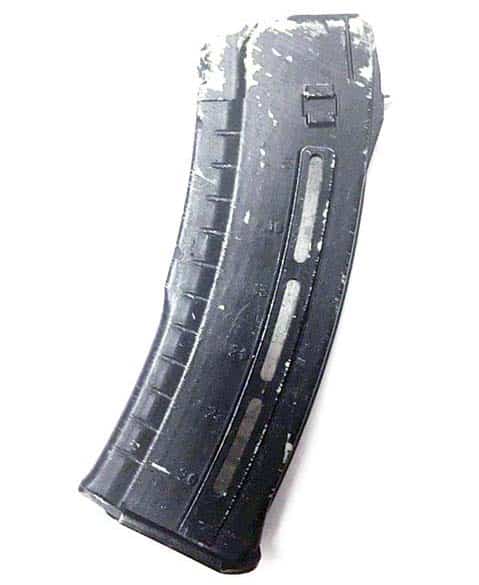
The future looked grim, and it seemed like Izhmash was going down, despite having over 200 years of history and the fact that it was producing the most popular rifle in the world. In a situation like that, the best way to get out of crisis is to negotiate a large order from the Armed Forces.
In 2012, during an annual defense exhibition, the Russian Minister of Defense had a quick visit to an Izhmash booth. After a short presentation, he said: “Okay, listen, we need a transparent magazine, so the soldier can see how much ammo is left.” Everyone agreed, but as the development process started, the factory was a bit reluctant to demonstrate the prototypes before preliminary testing was complete.
A year after, in 2013, when the Minister of Defense showed up at the Izhmash booth again and did not find any transparent magazines, things turned from bad to worse. “You can’t even make a transparent magazine, what are you good for, I wonder?” That is not something you ever want to hear from the biggest poten-tial customer.
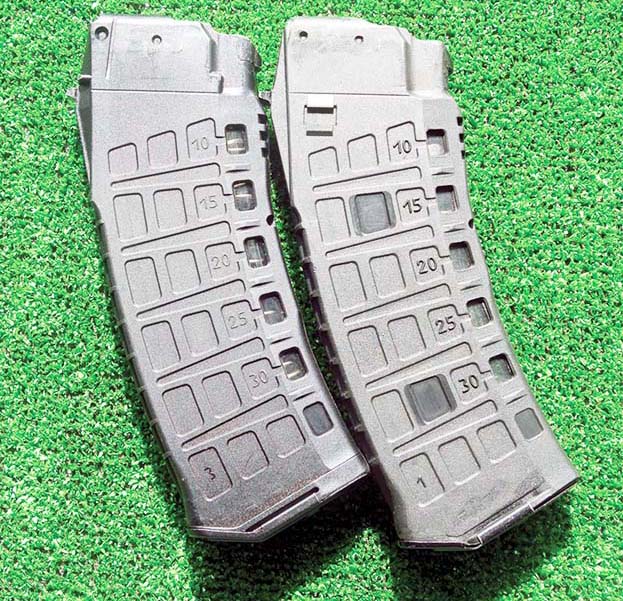
Two generations of AK-12 magazines, with and without M4-style mag catch holes.
At this point, something had to be done, and by Summer 2014, several 3D-printed proto-types of transparent magazines were ready for demonstration. At that time, the author just started working on some projects at the factory, and it was well understood that fulfilling the request for transparent magazines might change the future of the company.
The big day came on August 4, 2014, when the Minister of Defense was visiting Kalashnikov Concern booth during an annual “The Day of Innovation 2014” exhibition. This exhibition was generally closed to the public and gave industry professionals an opportunity to check out some of the newest small arms developed for the Russian military and law enforcement.
As everyone prepared for the visit, mag-azines were placed right at the entrance of the booth, so the Minister of Defense would not miss them. However, at the very last moment, the minister and his entourage suddenly came in from the other side. He briefly looked at the guns, shook his head and qui-etly said, preparing to leave: “And once again, no transparent magazines.”
The author rushed to the other side of the booth, grabbed the magazines and rammed through the entourage, screaming: “There you go, Sir, here are two prototypes, ready for testing.” The ice was broken, the minister and generals looked at the magazines, discussed technical features and were clearly happy that their request was finally fulfilled. Eventually, transparent magazines were included into the standard AK-12 kit.
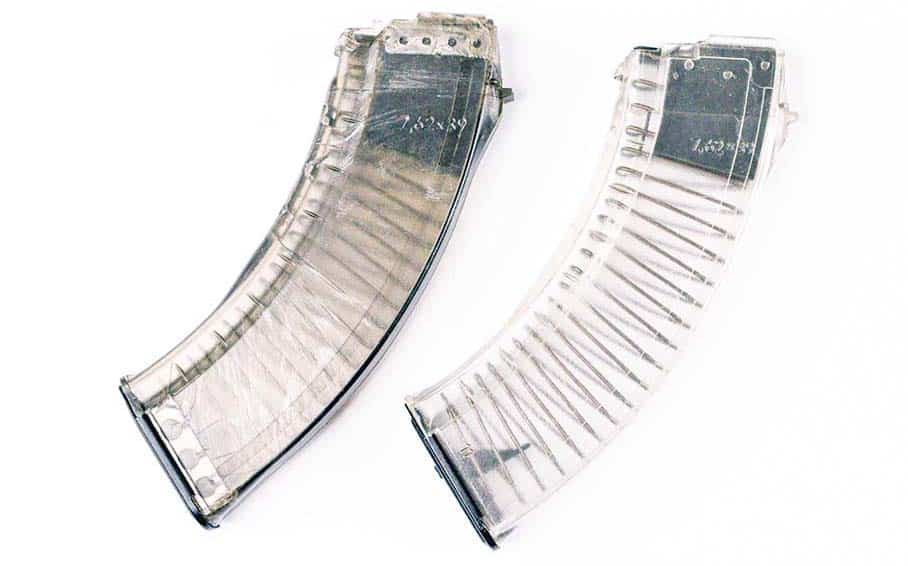
The first prototypes of transparent magazines were rather primitive, but as we know, “it’s the thought that counts.” The next day the author did a weapons demonstration, and the prototype magazine worked flawlessly on an AK-107 rifle.
By the end of August, prototypes of AK-12 magazines were in the final stages of development, and on August 26, 2014, Vladimir Zlobin, who at the time was the chief design engineer of Kalashnikov Concern, filed a request for a patent for his AK-12 magazine.
Early Features
This early magazine had so many features that later, some of them were deemed unnecessary. For example, the first prototypes had a special bracket system that would allow connecting magazines side-by-side, much like G36 mags.
That system was eliminated on the first production run, but other features remained for some time, such as M4-style mag catch holes. The idea was that the new generation of AKs would have a magwell, but that never happened.
M4-style mag catch holes were present on the first mass-produced batch of magazines but disappeared in later generations. The same happened with the drawing of the round on the feed lips, which reads: “5.45×39.” So if you ever see one of the early ones for sale, make sure you will not let it get away; collecting value of AK-12 mags with M4-style mag catch holes will only increase in the future.
Some other features remained unchanged in later generations. The main features of the AK-12 mag are the transparent windows that allow you to see the amount of ammunition left in the magazine. Another distinct feature is the new floorplate and the shape of the bottom of the magazine that allows using it as a monopod.
There is also a special full mag indicator: when the magazine is fully loaded, the indicator protrudes out of a floorplate, which gives the shooter the opportunity to check magazines in low-light conditions without actually looking at them.
One of the problems I encountered with early mags was that the carbon building up in a magazine turned the transparent windows to trans-lucent and eventually just made the windows completely useless. I talked about this issue with Vladimir Zlobin, and he addressed the problem; now the transparent insert in a magazine is removable, and you can easily clean it.
Some of the first generation mags did not have the cutouts for stripper clips; later gen magazines have them. The magazines without stripper clip cutouts are quite rare.
In 2018, similar magazines were introduced for the AK-15, which is chambered for 7.62×39. Those magazines had a more conventional shape, without a “monopod” feature, but other than that were identical to 5.45 mags.
Additionally, several 5.56×45 magazines of the same type were showcased at the Russian “Army-2018” exhibition with AK-201 and AK-202 assault rifles.
The same 5.45×39 AK-12 magazine is sold with “TR3,” a sporting variant of the AK-12 assault rifle. Every TR3 comes with one magazine that contains a piece of steel wire, which limits the capacity of the magazine to 10 rounds. The wire is easily removable.
Same magazines are sold with an AK-12 MMG (deactivated non-firing gun). Unfortunately, following an ancient tradition, the fac-tory deactivates those magazines, cutting off the feed lips—a barbaric tradition. When you are buying a magazine, make sure you will not get one of those deactivated ones.
There were other variants of the AK-12 magazine, including a completely transparent one. Unfortunately, so far, no magazine completely made of transparent plastic survived Russian military technical trials. They all eventually break during the testing, and so far, small transparent windows seem like an ideal compromise between visibility of the rounds and durability of the magazine.
However, completely transparent magazines are produced by Kalashnikov Concern but strictly for the civilian market. Some of those transparent 7.62×39 magazines are being sold in the U.S. right now. Their collecting value is minimal—plenty of those magazines will be available in the near future.
The prices of AK-12 mags will likely go down in the next few years. Recently, the Russian military ordered over 130,000 AK-12s, and in a few years the market will have a steady supply of magazines. However, if you can grab a rare, earlier version with M4-style cutouts, its price will only go up every year.
Final Thoughts
When you are collecting something, you are not just collecting items; you are collecting stories, preserving history and information. The transparent AK-12 magazine is a simple item, but as you can see, there is a lot of history that goes with it.
In the next articles, we will look at the history of modern Russian high capacity magazines, particularly drums and 5.45 quad stacks, which seem to be the rarest and most expensive AK magazines in existence.
The author would like to thank friend and fellow researcher Pavel Pticin for the photos and information provided for the article.
| This article first appeared in Small Arms Review V24N1 (Jan 2020) |



